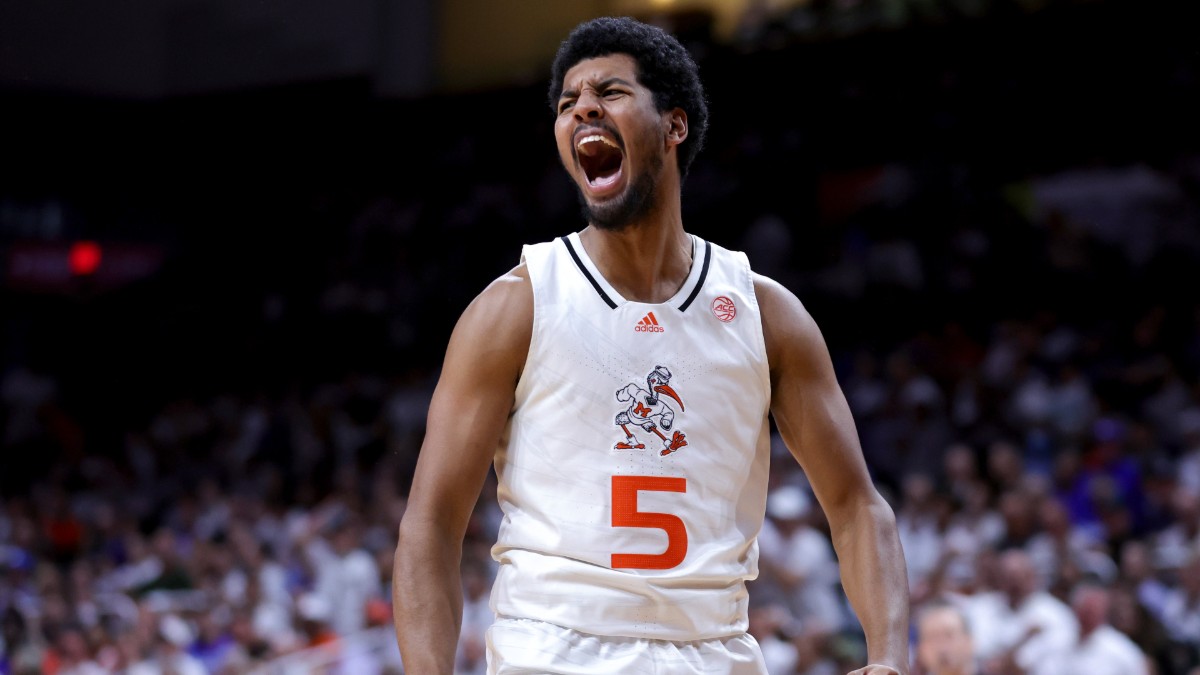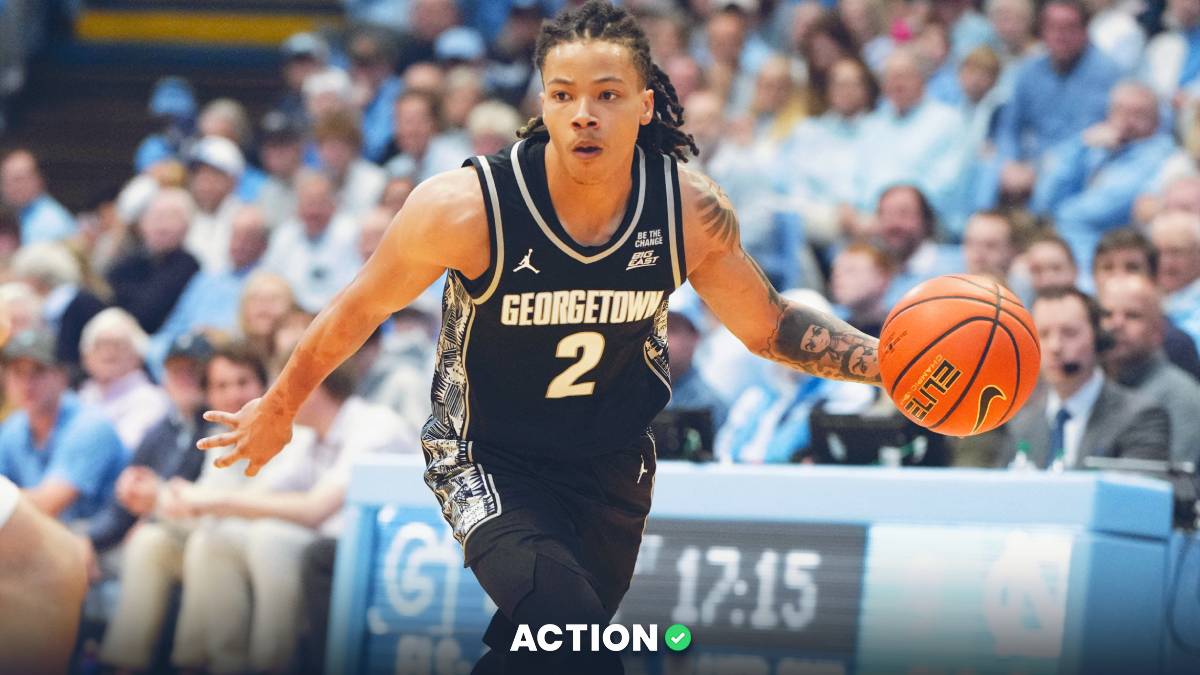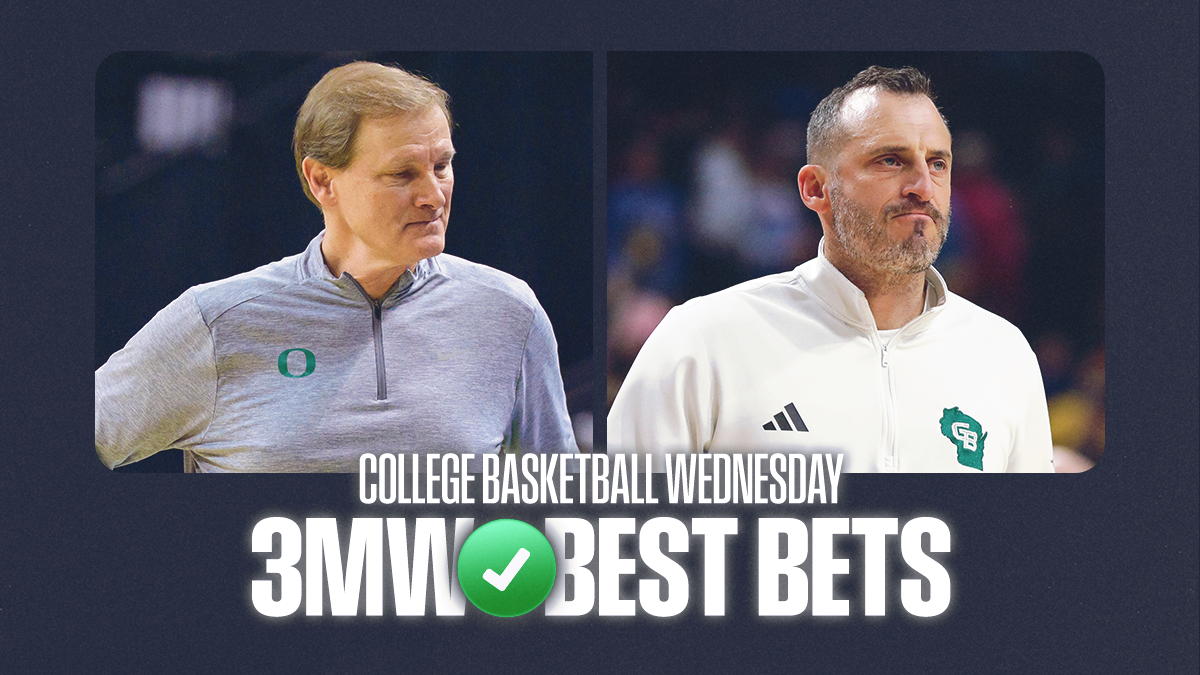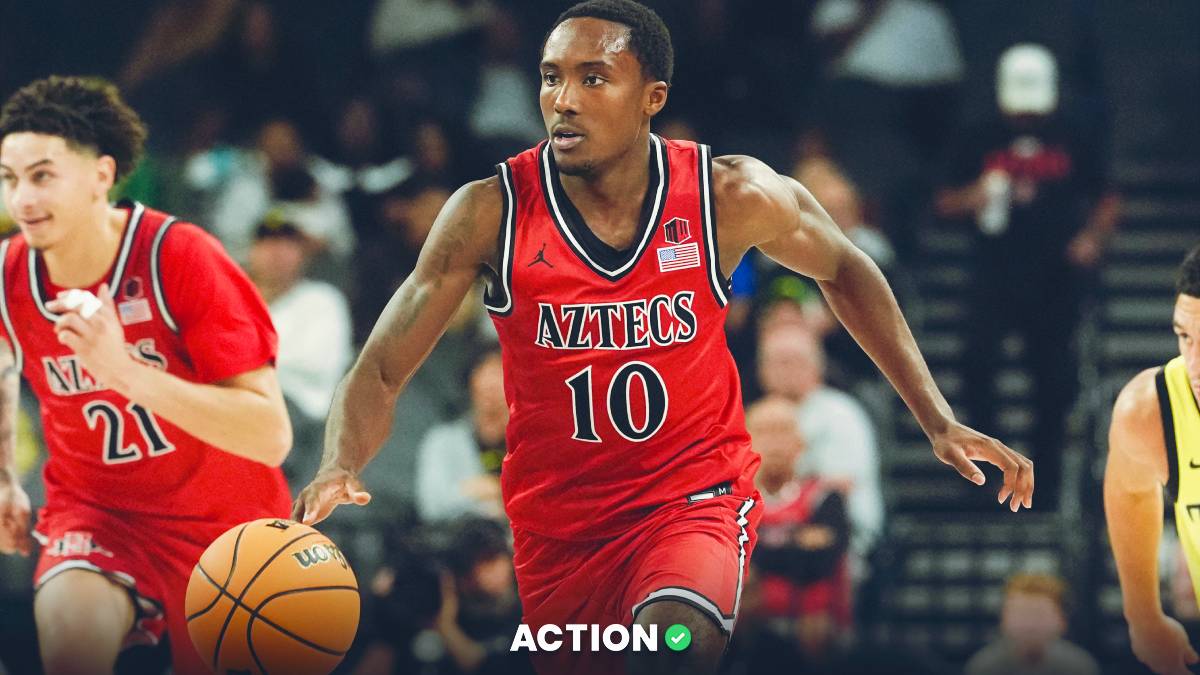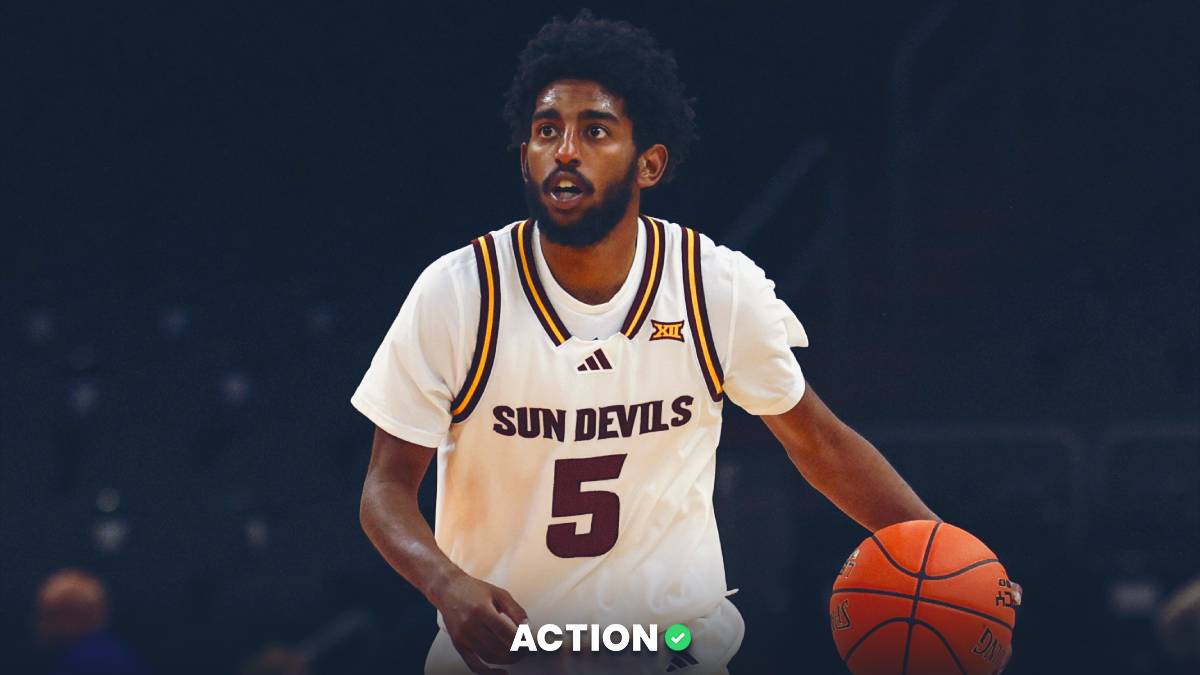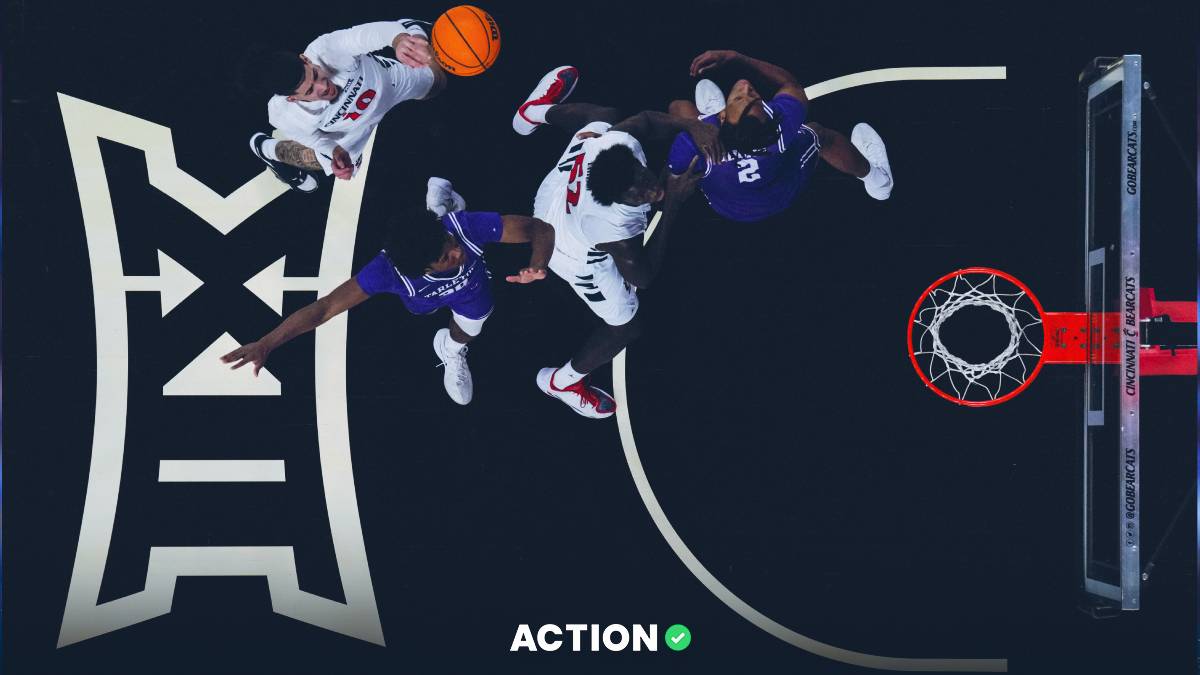As I've done the past few NCAA tournaments, I wanted to share five fairly basic factors that I use as a starting point to identify key mismatches and potential upsets in either the first round or further down the line in the bracket.
Those include:
- Unique schemes
- Rebounding splits (and a touch of transition data)
- Free throw percentages (and frequencies)
- 3-point shooting splits
- Turnover rates
My power rating is my starting point and most important factor, but understanding each team's statistical profile and how they match up with their opponent is what I spend the most time on leading up to the tournament.
With a lack of familiarity outside of conference play, matchups and coaching mean even more.
Let's take a look at which teams zone and press the most to get things started.
In The Zone
For the season, 38 teams played zone defense on at least 18% of their possessions. Believe it or not, 37 of those didn't make the tournament field, with the most infamous zone of Syracuse leading that list of names.
(Merrimack did win both the NEC regular-season title and conference tournament, but is not eligible for the NCAA tournament, which is insane, but that's a topic for another day.)
The only team to make it from that list was the Northern Kentucky Norse, who ran zone at the fifth-highest rate (70.9%) in the country, per Synergy. On the season, they rank in the 81st percentile in points per possession allowed when in zone.
However, that could spell trouble in the first round against Houston, which plays in a league where it sees plenty of zone looks. The Cougars faced zone at the 19th-highest frequency and graded out in the 75th percentile on those possessions.
The zone also leaves teams vulnerable to opponent offensive rebounds. NKU ranked 333rd in defensive rebounding rate, which is not ideal against a Houston club that dominates the offensive glass at a top-four rate.
Two tournaments ago against another zone-heavy Horizon team, Houston demolished Cleveland State by 31 with an absurd 50% offensive rebounding rate.
This marks one of the lowest representations of zone defenses in the field that I can remember.
Now, that doesn't mean we won't have any zone defenses. Six other tourney teams utilized a zone defense on at least 10% of their possessions.
Here are their season-long zone frequencies and respective points per possession allowed percentile ranking:
- Missouri (17.8%, 57th percentile)
- Iowa (15.9%, 31st percentile)
- USC (12.6%, 63rd percentile)
- Baylor (12.5%, 77th percentile)
- Maryland (11.0%, 61st percentile)
- Kennesaw State (10.0%, 58th percentile)
You also never know when a team will throw out a surprise zone based on tourney preparation.
Per Synergy, these five tournament teams had the highest points per zone possession among the 332 teams in the country that saw zone on a minimum of 75 possessions:
- Utah State (1)
- Grand Canyon (2)
- Colgate (4)
- Iowa (5)
- Nevada (7)
And these are the worst:
- Arkansas (299)
- Arizona State (298)
- TCU (T-273)
- Northwestern (T-273)
- Iowa State (262)
Press U
FDU is the only team that pressed at a top-10 rate nationally that made the tournament. The Knights had the country's highest press rate at 53.5%.
In total, 11 tourney teams have pressed at a top-50 frequency. Here are those clubs and their respective points per possession allowed rankings:
- FDU, 53.5% (48th percentile)
- Missouri, 36.2% (58th percentile)
- VCU, 34.3% (95th percentile)
- NC State, 33.4% (75th percentile)
- Iona, 31.6% (83rd percentile)
- Maryland, 28.4% (65th percentile)
- San Diego State, 25.6% (81st percentile)
- Memphis, 23.0% (85th percentile)
- Howard, 22.8% (51st percentile)
- Texas A&M, 18.7% (72nd percentile)
The press can obviously cause issues for teams that don't have multiple reliable ball-handlers. Here are the seven best in the tourney field in terms of PPP among the 355 teams that faced the press on a minimum of 100 possessions:
- Penn State (1)
- Creighton (2)
- Oral Roberts (4)
- Providence (6)
- Missouri (8)
- UCSB (14)
- Indiana (15)
You may have noticed the two most efficient press offenses in the country will each face opponents that press at a top-50 rate nationally in the first round.
Utah State also grades out in the 91st percentile nationally against the press (212 possessions), which is relevant against Missouri.
Meanwhile, Saint Mary's doesn't grade out poorly against the press, but did struggle immensely at times against the press vs. both Gonzaga and BYU. That's something to monitor against VCU.
And the seven worst who could be particularly prone to blowing late leads:
- Iowa State (340)
- Howard (313)
- Illinois (311)
- Montana State (303)
- Boise State (293)
- TCU (289)
- Northern Kentucky (272)
Arkansas only pressed on 8.5% of its defensive possessions, but don't be surprised if Eric Musselman breaks it out more against the Illini — especially if the Razorbacks are trailing late.
That's something to keep in mind for a potential live betting angle, especially since Illinois struggles at the free-throw line.
Sloppy Joes
On a related note, understanding who can and can't take care of the ball in a tournament setting is vital. That's especially true in the second game of the weekend after only one day of prep for a quick turnaround.
I personally also try to avoid overmatched underdogs that turn the ball over too much — since that can lead to easy buckets and extended runs the other way.
Here are the best and worst tournament team turnover rates on both offense and defense. Please note that some of these could be by design based on scheme.
- Marquette forces turnovers at a top-five rate among tournament teams. However, Vermont has a bevy of ball handlers who can handle pressure, hence the ninth-lowest turnover rate in the country.
- UNC Asheville is one of four teams in the field with a turnover rate north of 20.0%. That could spell trouble against a UCLA defense that ranks 11th in the nation in that department.
- The same can be said of the Kansas State offense against a Montana State defense that forces turnovers at a top-75 rate nationally.
- Iowa does have the eighth-lowest turnover rate in the entire country. However, the Hawkeyes play in a league full of teams that don't force turnovers at a high frequency outside of Northwestern, which turned Iowa over at 18.2% and 22.1% in their two meetings.
- Don't expect many turnovers (or fouls) in any Penn State game, while the opposite holds true for Iowa State.
Charity Work
Death, taxes and free throw misses leading to bad beats in the tournament. Get ready for them to come just like every season when fouls go up by over 20% in the final two minutes of the dance.
It's valuable to at least know which favorites can and can't shoot free throws. This could also make a difference in your bracket. One off shooting night from the charity stripe could send a team packing.
The chart below shows the 12 tournament teams that rank in the top-50 nationally in free-throw percentage, in addition to the 12 worst in the field.
- Somehow, Colgate ranks first in the country in 3P% but 335th in free-throw percentage.
- Four of the best free-throw shooting teams in the field will face each other in the first round when Duke takes on Oral Roberts and Drake faces Miami.
- On the other end of the spectrum, Illinois-Arkansas and Mary's-VCU feature four of the 10 teams in the field that shoot under 70.0% from the line.
- The Iowa State aggressive defense fouls at the highest frequency among all tournament teams. Pittsburgh could potentially take advantage, as the Panthers sit in the top-50 nationally in free-throw percentage. The Cyclones also struggle at the line themselves.
- Similarly, the Kansas State defense ranks 299th in the country in free-throw attempt rate, which should be music to the ears of a Montana State squad that gets to the line at the fifth-highest rate in D-I. The Bobcats are also one of only 10 teams in the field that shoot over 76% from the charity stripe.
- The same holds true for Utah State against Missouri. The Tigers' defense fouls at the 276th-highest rate in the country, which could prove costly against an Aggies offense that ranks 65th and 29th in free-throw attempt and make percentages, respectively.
- Lastly, Texas A&M makes a living at the free throw line. The Aggies get there at the third-highest rate in the country and make them at a top-40 clip. However, that might not be as easy against a Penn State team that fouls at a bottom-40 rate nationally.
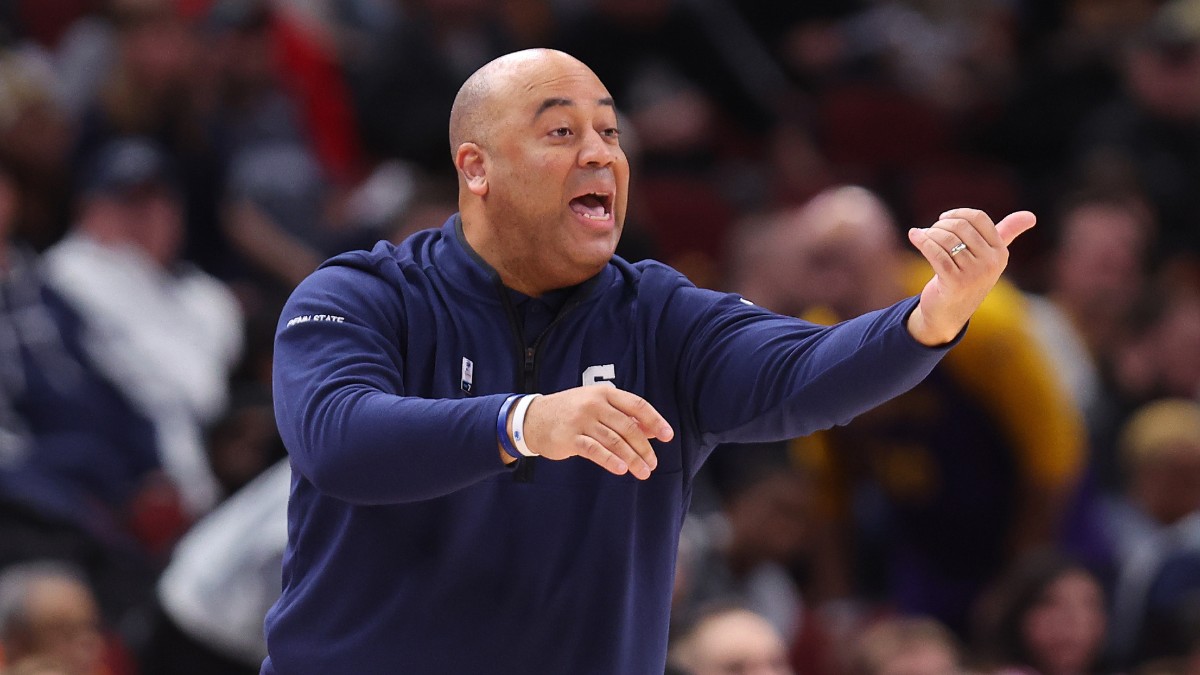
From the Parking Lot
We spend all week breaking down these games, but a large majority of the betting (and many outright) outcomes will simply come down to 3-point variance, especially as the market continues to get more efficient with each passing year.
You should at least have some familiarity with which teams can shoot and which ones can't when evaluating specific matchups.
This is also an important factor when evaluating potential upsets for your bracket. Teams that shoot (and make) a high percentage of 3-pointers will certainly introduce more variance into one result, which is a positive factor for a potential upset.
The chart below shows the seven best and worst 3P shooting offenses and defenses. This is just a very basic starting point for any analysis, as there can be drastic scheme differences that lead to a significantly higher or lower percentage of 3-pointers taken or allowed by design.
Some teams also just might have had a lucky season, in which case the regression monster may be ominously looming.
- Watch out for falling bricks if you're headed to Des Moines to watch Arkansas vs. Illinois.
- You may have noticed that three of the four best 3-point defenses reside in the SEC, which likely has more to do with the fact that most of the league can't shoot from the outside. The SEC ranked last among all conferences in 3P%. This could end up proving fatal for Texas A&M against a Penn State team that attempts and makes 3s at a top-10 clip nationally.
- The same could be said for Missouri, which still allowed over 35% shooting from the outside despite playing in the SEC. The Tigers allow a ton of outside looks (partly by design), but will now have to face a Utah State team that ranks 11th in the country in 3P%.
- Both Michigan State and UNC Asheville are potential negative regression candidates after each shot around 40% from deep in league play, while their opponents only connected on about 30%.
- Lastly, Montana State is a very poor outside shooting team, but that negates the strength of the Kansas State perimeter defense. The Bobcats need to get to the rim and the line, which they can do against the Wildcats.
For reference, the five tournament teams that shoot the highest percentage of 3-pointers per field goal attempt include:
- Alabama (47.8%)
- Charleston (47.4%)
- Penn State (47.4%)
- Furman (46.4%)
- Oral Roberts (45.8%)
Alabama also ranks in the top five among tourney teams in limiting opponent 3P attempts, along with Arkansas, Creighton, Louisiana and Connecticut.
Conversely, Iowa State, Texas A&M, Missouri, Houston and Memphis allow the highest attempt rates.
And the least 3-point reliant teams include:
- Indiana (26.3%)
- Arkansas (28.2%)
- Memphis (28.8%)
- UCSB (29.1%)
- TCU (29.4%)
Eating Glass
If the shots aren't falling from the outside, offensive rebounds can really bail a team out in a sudden death tournament.
Take a look at the 10 tournament teams that rank in the top-20 nationally in offensive rebounding rate along with the 10 worst defensive rebounding teams.
Keep in mind that some of these statistics can simply be a result of a specific scheme by design. A team like Northern Kentucky allows such a high rate of offensive rebounds because it plays a lot of zone defense, which spells disaster against an elite offensive rebounding team in Houston.
The Cougars took advantage of a similar style opponent from the Horizon two years ago in the tournament when it beat Cleveland State by 30+ thanks in large part to a 50% offensive rebounding rate.
Also, some teams don't get any offensive rebounds due to a simple lack of size but others (like Drake) don't in order to get back on defense to prevent any transition opportunities.
Conversely, others are vulnerable to opponent offensive rebounds due to the fact they want to get out in transition off misses (see TCU). The same holds true for ultra-aggressive defenses that get out of position by going for steals or blocks.
If you're curious, the teams that get out in transition at top-20 rates nationally include:
- TCU
- Missouri
- Memphis
- TAMU-CC
- Charleston
The first three grade out well in terms of transition efficiency, while TAMU-CC and Charleston grade out just average in that department, per Synergy.
Meanwhile, the eight tournament defenses that rank in the top-25 nationally in lowest transition rates allowed include:
- Michigan State
- Utah State
- Indiana
- Nevada
- Colgate
- Purdue
- Saint Mary's
- Oral Roberts


